RECENT COMMENTS

New houses in 23223 by year (1930-2016)
Anecdotally, it feels like the past few years have seen a tremendous number of new houses built in the area. I wanted to put some numbers to this notion for some historical perspective.
The most readily available data is from the City Assessor, which lists the year built for each structure in the city. I took the chart back to 1930, working on the assumption that most houses built since then are likely to still be standing.
From the data valuable, I pulled out all of the properties in zip code 23223 (in the city) listed as single family, duplex, 1 family owner, 1 family tenant, condo duplex, or townhouse owner.
The data shows spikes of new housing construction around 2007 and 1996, and then back to 1966 and to the mid-1940s, and yes – a good jump in 2015.
The current boom is notable for a number of houses at higher price points, being concentrated south of Nine Mile Road (though right up against it), and entirely single-family and mostly market-rate. You have to go back to the 1940s & 1950s to find an equivalent number of unsubsidized single-family housing starts anywhere in 23223.
The mid-2000s development boom was due in large part to the number of houses built by Better Housing Coalition and others in the Church Hill Central designated area of the city’s “Neighborhoods in Bloom” program.
The jump in 1996-1997 is also attributable to Better Housing Coalition, with the construction of the Jefferson Mews homes along 22nd/23rd, and houses along the entire 1200 block of 30th Street.
The spike in 1966 is almost entirley attributable to the town homes now known as the Villas at Oakwood, listed on the city records as “condo duplex”.
This is based on data available (FTP) as of Sunday, April 17, 2016. The Google Fusion table of the data used is also available.
— ∮∮∮ —
Zip code 23223 in Richmond
— ∮∮∮ —
Houses by year built (still existing)(1930-2016)
— ∮∮∮ —
Built in 1945-1946 (still standing)
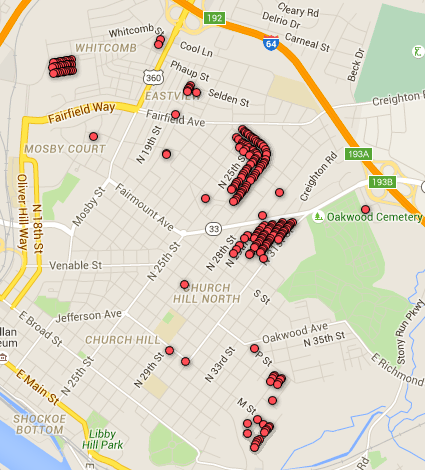
— ∮∮∮ —
Houses on 30th and 31st Streets (1945-1946)
— ∮∮∮ —
Built in 1996-1997 (still standing)

— ∮∮∮ —
500 block of North 23rd Street (from 1996-1997)
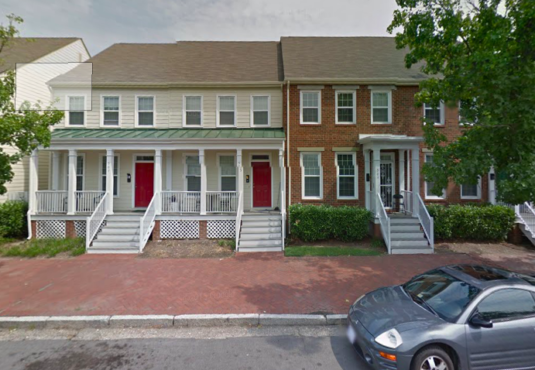
— ∮∮∮ —
1200 block of 30th Street (from 1996-1997)
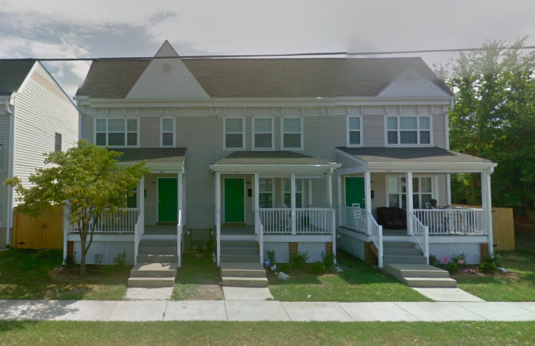
— ∮∮∮ —
Built in 2006-2008
— ∮∮∮ —
2200 block of Q Street (2006-2008)
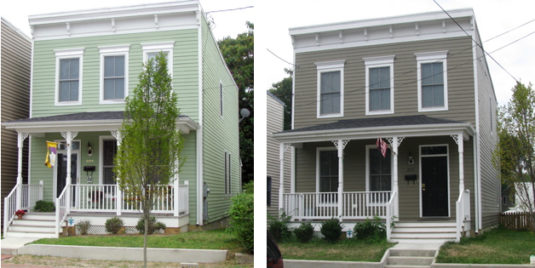
— ∮∮∮ —
Neighborhoods in Bloom – Church Hill Central (mid-2000s)
— ∮∮∮ —
New in 2015

— ∮∮∮ —
1300 block of 28th Street (2014)
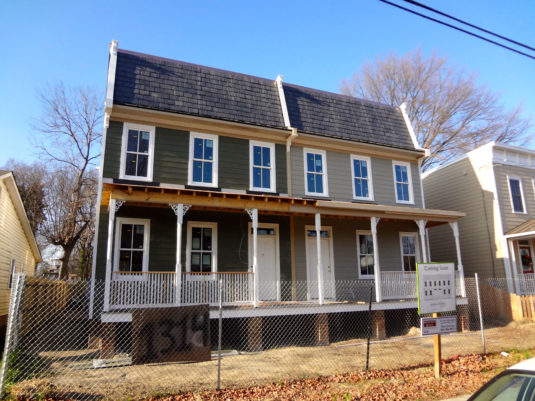






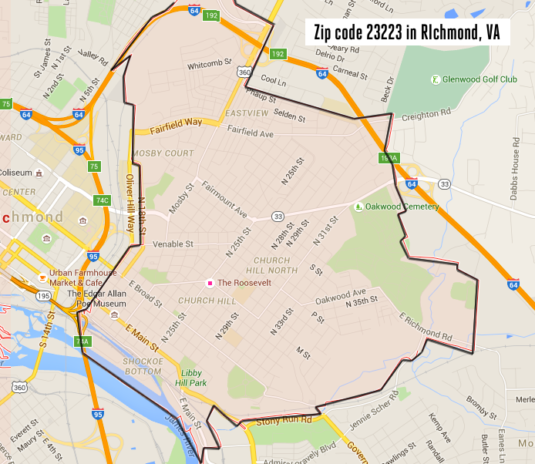

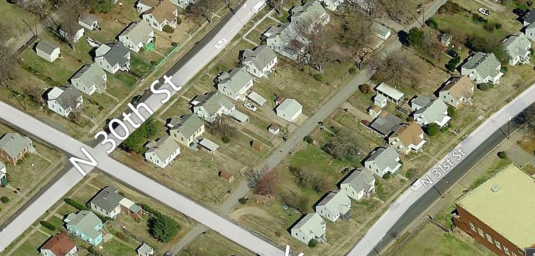
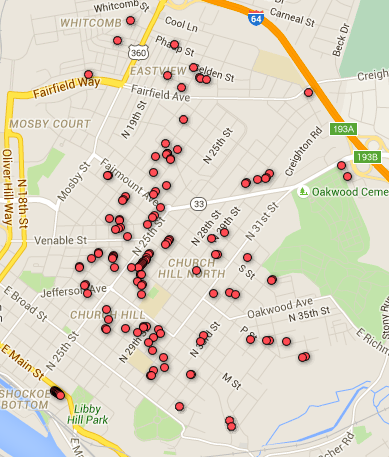

This is pretty interesting. I would have thought (given the Jefferson Mews model, also the pattern seen in the 1940s) that there would have been more corridor- or cluster-driven development, but the new starts since the mid-2000’s are pretty dispersed. Is there similar data available on new retail locations?
I’m guessing that the WWII spike was attributable to the GI Bill – Vets returning home and buying new homes but would enjoy hearing from someone more knowledgeable. Was this before “red-lining” was going on?
@Matt – nope, the East End was already being graded out by the 1930s
/2009/08/27/residential-security-map-of-richmond-from-the-1930s_8754/
@John M – thanks for sending this link. I am confused by the picture above from 1945-46 which looks to be across from Old Armstrong. Are you suggesting this is the area of new home development during this time? If so, I would expect this was primary black new home owners as it was across the street from the oldest black high school in the region. It seems safe to assume that red-lining didn’t bar all blacks from gaining home loan access in this area. I’m sure it’s a ton of work but it would be fun to see a post-WWII bubble point map of new homes built between 1945-1950 since this appears to be the driver of a ton of Church Hill growth.
sending edit to my previous comment (which you are welcome to delete) after after further reflection. Sorry the pollen is keeping me from thinking straight.
@John M – thanks for sending this link. Your 1945-46 data suggests significant new home growth in what I assume would have been black neighborhoods. This would stand as a counterpoint to the red lining story we discussed above but certainly not eliminate it. Only suggesting that the times had many narratives running through them. If your not entirely over data-mining this stuff, I would love to see the 1945-46 bubble point map expanded to 1950 to see a broader footprint of this Post WWII Church Hill development.